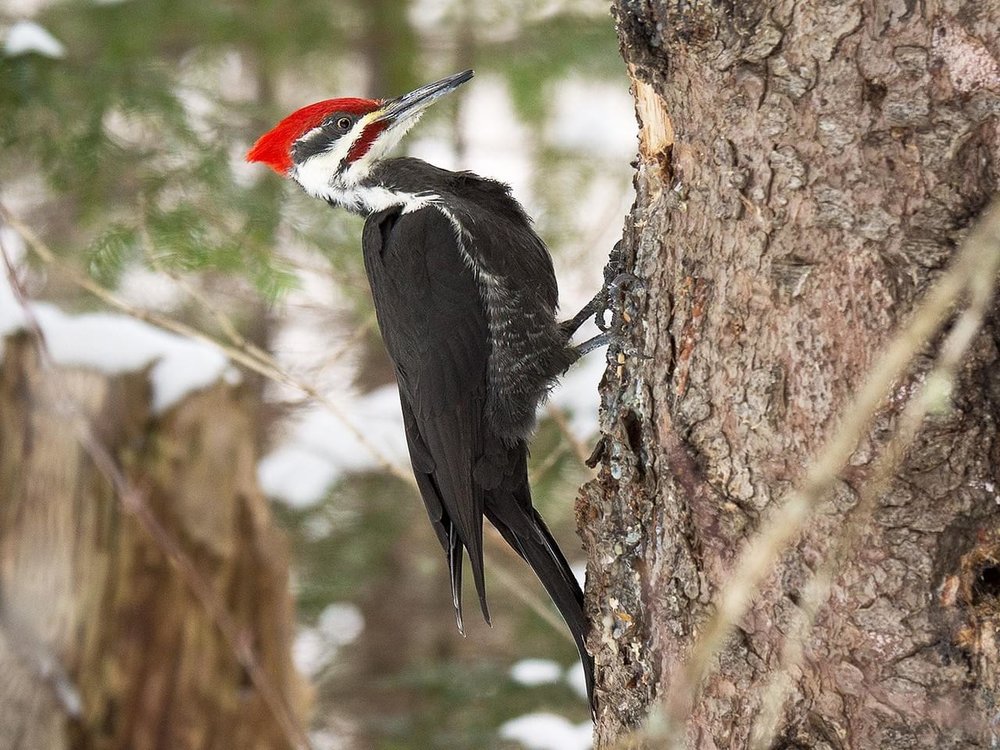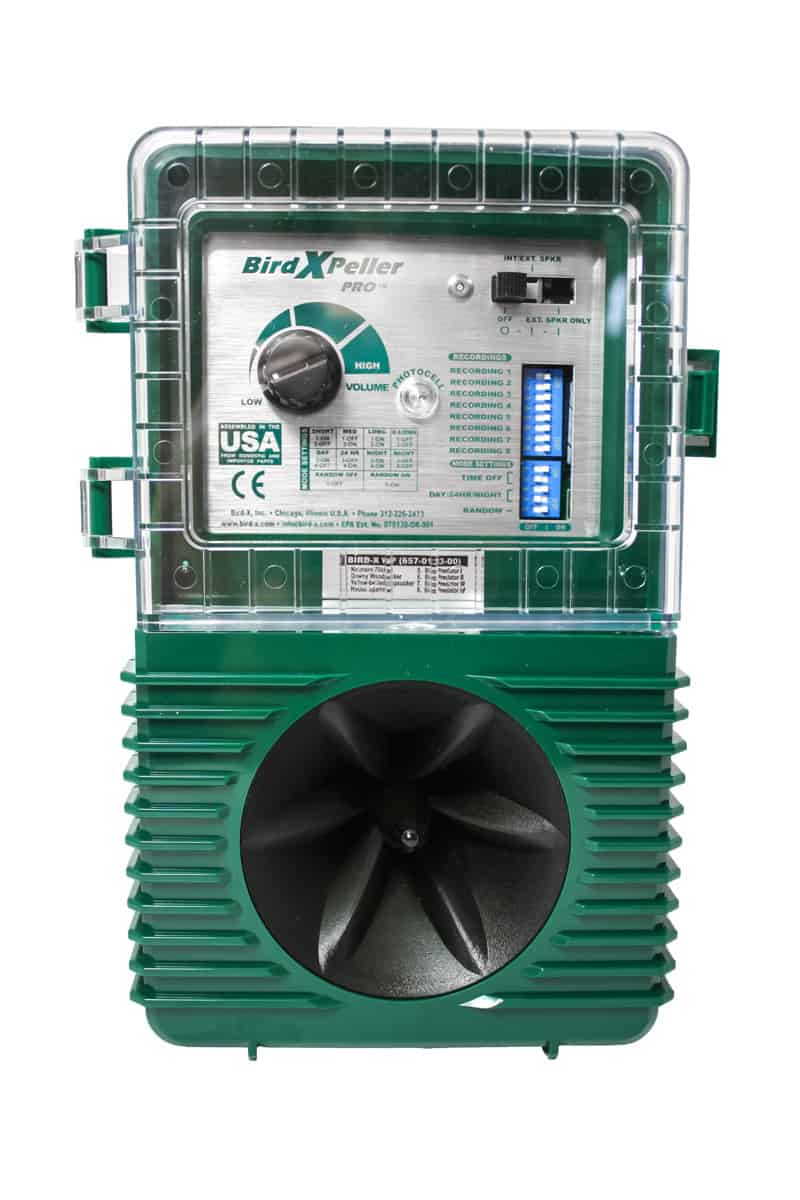Guide For Deterring Woodpeckers From Your Home
Written by Emily Michel, Bird-X Blogger & Customer Service Advisor
Woodpeckers are beautiful birds and a favorite species among birdwatchers. However, they can become a nuisance when they start drilling holes in your roof or siding. They can also make a loud, incessant drumming noise and even leave your trees exposed to disease.
Fortunately, you can keep these feathered creatures away from your home without harming them. After all, these birds are protected by environmental laws due to the crucial role they play in the ecosystem. Read on to learn how to deter woodpeckers.
What Attracts Woodpeckers?
These birds are attracted to surfaces such as aluminum siding, tin roofs, windows and the eaves of your home. This is because they like to use drumming as a form of communication, and these surfaces offer exceptional amplification. A woodpecker pecking your house may also be searching for food.
Signs of Woodpecker Damage
If you notice holes in a horizontal or vertical line that have been drilled into your siding, trees or wooden structures, it could be a sign of woodpecker damage to your house. Their sharp beaks allow them to drill into wood to extract insects. It’s essential to learn how to stop woodpeckers so that they don’t cause destruction to your property, as this can be costly.
1. Is there a specific woodpecker season?
Woodpeckers can show up at your doorstep any time of year, however, their primary drumming period is most common in the spring or fall during the early morning and/or late afternoon. In the spring, males will create a loud drumming noise on various surfaces to attract a mate or establish and/or defend a territory. Damage to structures can be extensive. Male woodpeckers will drum on trees, as well as metal eaves, gutters, house siding, poles, trash cans, wooden shingles, cedar, and redwood siding to create a sound. The louder the echo, the better for the woodpecker – and the bigger the nuisance for you.
2. Do woodpeckers migrate?
Some woodpeckers migrate, others don’t. The Yellow-bellied Sapsucker is truly migratory and travels to southeastern U.S. and eastern Mexico in the winter. The Northern Flicker and the Red-headed Woodpecker are two more species that have a tendency to migrate short distances if they breed in the northern areas of the U.S. and Canada. The small Downy Woodpecker breeds virtually all year round in the U.S. and Canada and is also the most common backyard woodpecker. The Pileated Woodpecker, the Hairy Woodpecker, and the Red-bellied Woodpecker are also woodpeckers that typically migrate regularly in the same northern areas of the U.S. and some parts of Canada.
3. Why do woodpeckers suddenly show up if you have never had one on your property?
Woodpeckers are smart birds and very resourceful. Like any wild animal, they are drawn to areas where there is food and shelter. Have you added new plants or bushes? Do you have aging trees? Increased insect populations in/around your home? Or perhaps a nearby area is becoming more urban, driving wildlife – including woodpeckers – to find an alternative living space. Whatever the case, deterring woodpeckers is possible.
North American woodpeckers are cavity nesters, often using “snags” (dead or dying trees) to excavate usable holes. Woodpeckers are also attracted to wood-boring insects. They will scavenge for food – bugs, vegetable matter, tree sap, berries, etc. – on trees and other wood sources and in the ground. Any home that hasn’t had a woodpecker before could very well develop the ideal habitat over time, attracting woodpeckers.
4. Are woodpeckers protected?
Woodpeckers are classified as migratory non-game birds and are protected by the Federal Migratory Bird Treaty Act, which forbids their forced removal from a property. However, ‘green’ humane woodpecker repellents such as those sold by Bird-X are permissible and safe for these protected birds.
5. What is the best solution for woodpeckers?
Wondering how to deter woodpeckers? Woodpecker damage can be prevented using visual repellents and/or loud noises. In fact, since woodpeckers are typically persistent creatures, the use of two or more devices or repellents will have the highest probability of success. For example:
If you’re wondering how to prevent woodpeckers from damaging your house, use the Bird-X Woodpecker PRO sonic repellent device to specifically target woodpeckers and drive them away from the area. Combine this powerful audio deterrent with a visual scare like Irri-Tape or Scare-Eye balloons for a synergistic bird control effect.
For some people, deterring woodpeckers is a year-round task. However, if you use safe, humane, effective products from Bird-X, your woodpecker problem will soon fade into the past. Best of all, your property (and your ears) will be protected from the noisy destruction of these trouble-making birds.
Recommended Solutions
Shop Woodpecker Pro
Shop Visual Scares






My aunt is having a woodpecker problem and cannot seem to sleep at night. It is interesting to learn that these birds are drawn to areas where there is food and shelter. I am glad to know that green humane woodpecker repellents are permissible. I will have to recommend this to my aunt.